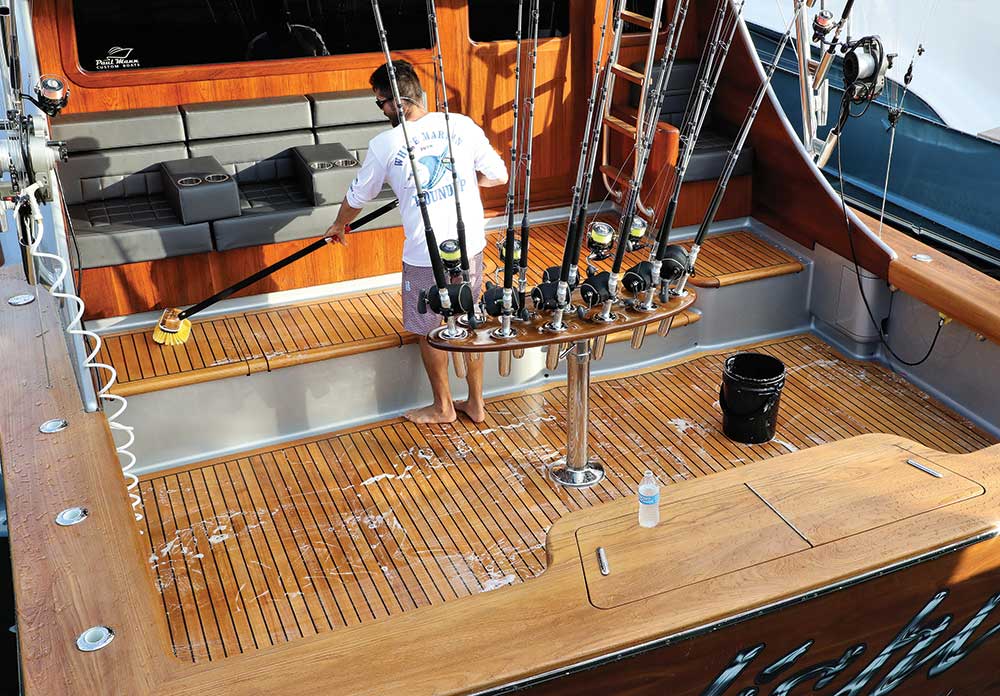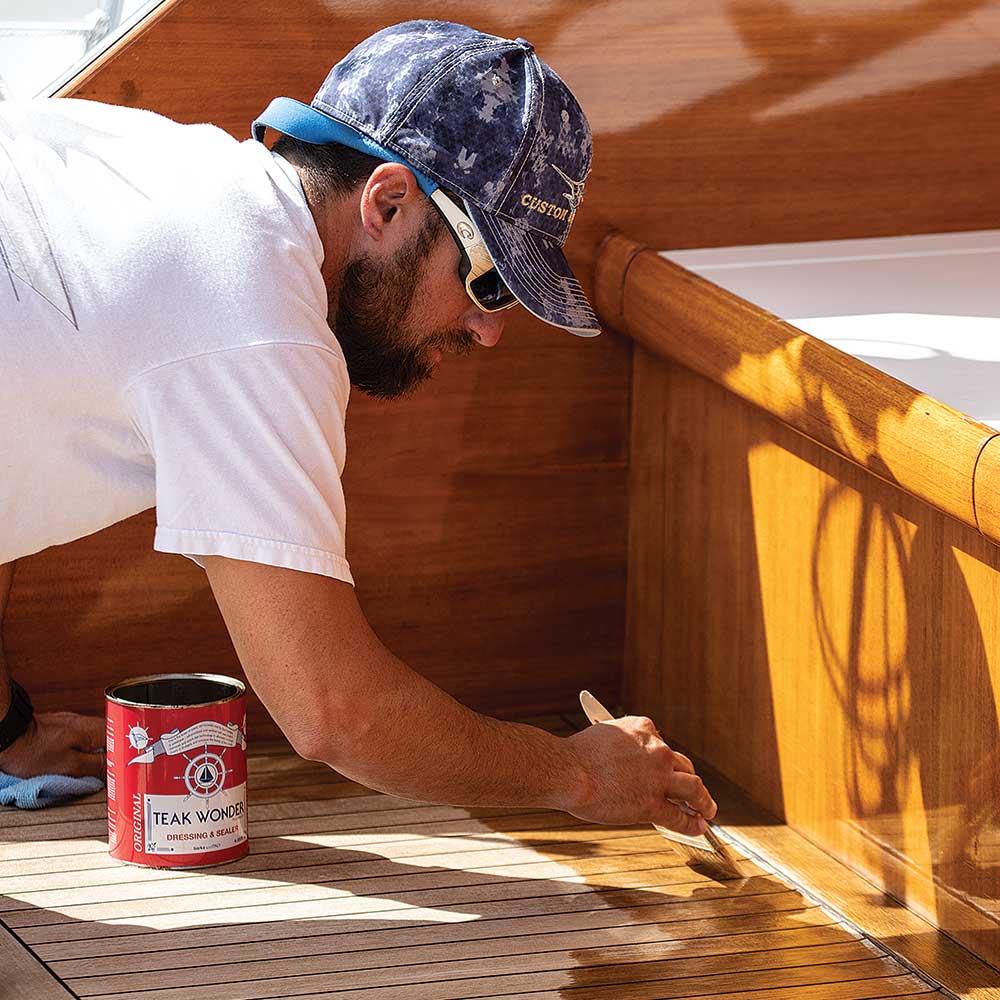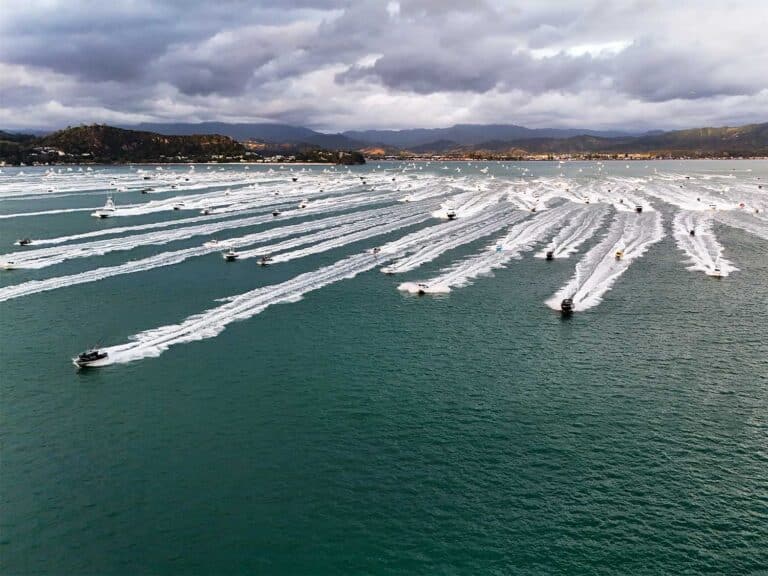
We have a love-hate relationship with teak. It looks amazing, provides excellent grip, hides footprints, and reduces glare, but the maintenance can be a struggle for just about anyone.
When walking the docks during a tournament, it is clear that these teams might be hard on their equipment, but they also maintain their boats to arguably the highest standards in the industry. Sometimes, the products and techniques that work for a more conventional boater or even for a motoryacht simply are not right for them.
In the outfitting business, we are asked every day: What is the latest and greatest in teak maintenance? Like many products, there are trends and what is popular today might not be popular tomorrow. I have also realized that it is not which product is the best, but which products and maintenance techniques are the right ones for your specific vessel and fishing style.
Understanding Teak Grain
Let’s start with an understanding of teak. There is both hard and soft grain in the wood, so each part of that grain will wear at a different rate. It is important to understand what effects certain maintenance techniques and products will have. For example, when you sand teak with heavy-grit paper, both the hard and soft grain is taken down evenly. When you acid-wash teak and scrub with the grain, or use a brush or pad that’s too aggressive, you take away the soft grains of the teak, leaving high ridges of the harder grain to collect mildew and dirt. Not a good look.
Weekly Cleaning and Maintenance Tips for Teak
The best maintenance routine is a weekly cleaning with a soft brush or fine Scotch-Brite pad if needed, against the grain with a mild detergent or boat soap. Add a very small amount of bleach if you are seeing mildew or just want to brighten it up. To get the look you want, you also can use a teak-brightening product, but this is strictly for looks and it doesn’t do anything to preserve the wood. An occasional light sanding with 120-grit wet/dry paper or a sanding sponge and a good sealer will keep your teak looking great for a long time.
If a weekly scrub of regular detergent, sudsy ammonia or eco-friendly teak cleaners aren’t working, think about why. Don’t just try a bunch of cleaners and degreasers. Are you harder than normal on the teak? Spills? Exhaust soot? Some cleaners might work better than others for your issues. Resorting to two-step cleaners or acids more often than you should might look great in the short term, but you might be bringing your problems back sooner than later by unnecessarily wearing down your deck. So use caution with the frequency of two-step cleaners.
Perhaps you’ve heard of products that some pros use and wonder why you are using the same ones and not getting similar results. Maintenance programs vary. Be sure you ask for specifics. Some cleaners have a degreaser, but you might need something to kill mold or vice versa. Seek advice from a professional whose teak looks the way you want; make sure you are using the products in the same way they do — not just the same products.

Tips for Sanding Teak
Sanding your deck and covering boards once a year is standard practice for fresh-looking teak. A good sanding can be better for the longevity of your deck than a two-step cleaner, because the hard and soft grain is taken down evenly. Finishing with 80-grit leaves a nice unpolished teak surface that isn’t slippery, but it might require some extra maintenance because the grain is left a little more open.
An 80-grit sanding on the deck and a 120-grit finish on the covering boards might be a good solution for a boat with a crew that tends to their teak on a regular basis. The higher number grit you use, the more slippery the deck becomes, so this finish is the perfect medium: not too slippery, but it tightens the grain up on the covering boards to provide a little more resistance to abuse.
Read Next: All About Teak
Tips for Sealing and Finishing Teak
Once you have the teak looking exactly the way you like it — either after a sanding or a proper cleaning — a teak sealer prolongs the natural appearance of the wood while sealing the grain. Some sealers and oils add biocides and UV inhibitors, which can really extend that pristine condition.
Always consider the appearance you are trying to achieve, any environmental factors and boat use when deciding which sealer to use; some do not change the appearance of the teak if you like a natural look. A few popular sealers are Semco and a new product call Triton by Ditec. Teak oil products are also an option, although some will promote the growth of mildew — probably not something you want to use if the boat sits for a long time without regular maintenance. In sport boat applications, oils are usually only used on covering boards and deck trim, and will definitely change the look of the wood. Again, consult a teak professional or a captain with a boat that has the look you are going for to be sure the product will work for you before applying it.
Keeping your boat’s teak ready for the season will be a much easier process when you thoroughly evaluate your individual needs, sand appropriately and at the correct intervals, choose the right products, and apply them properly for the look you would like to achieve.







